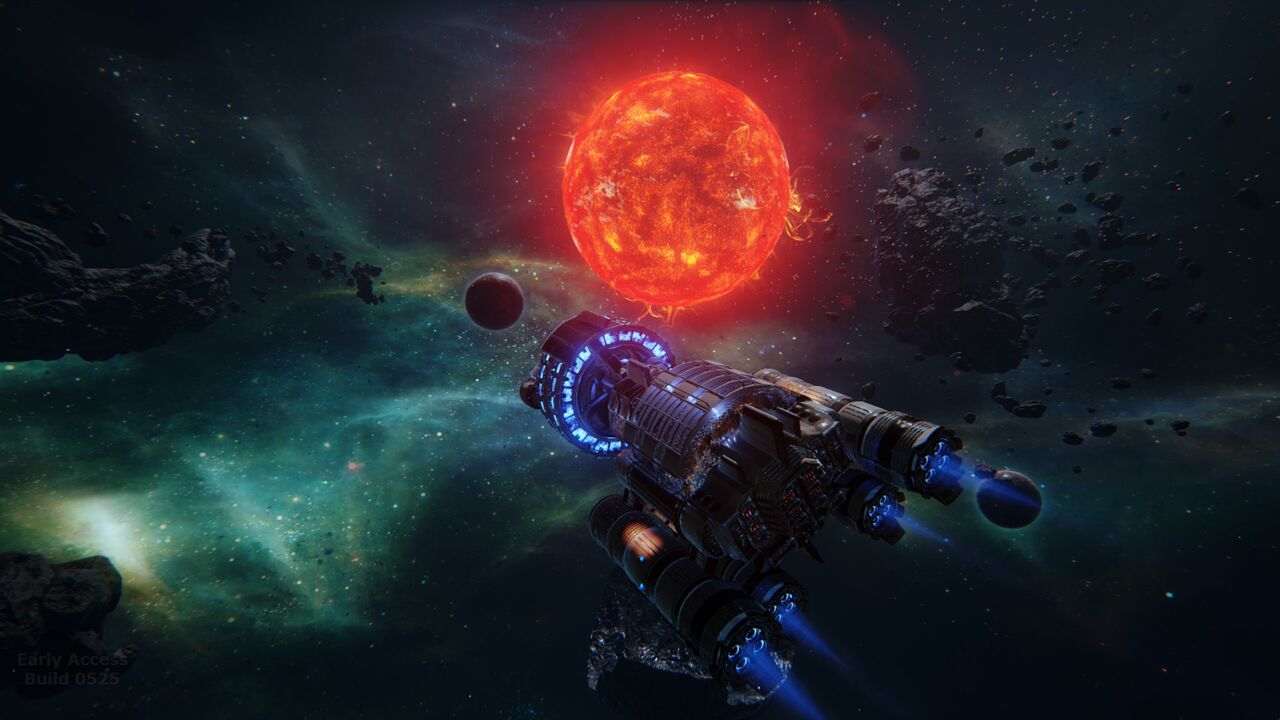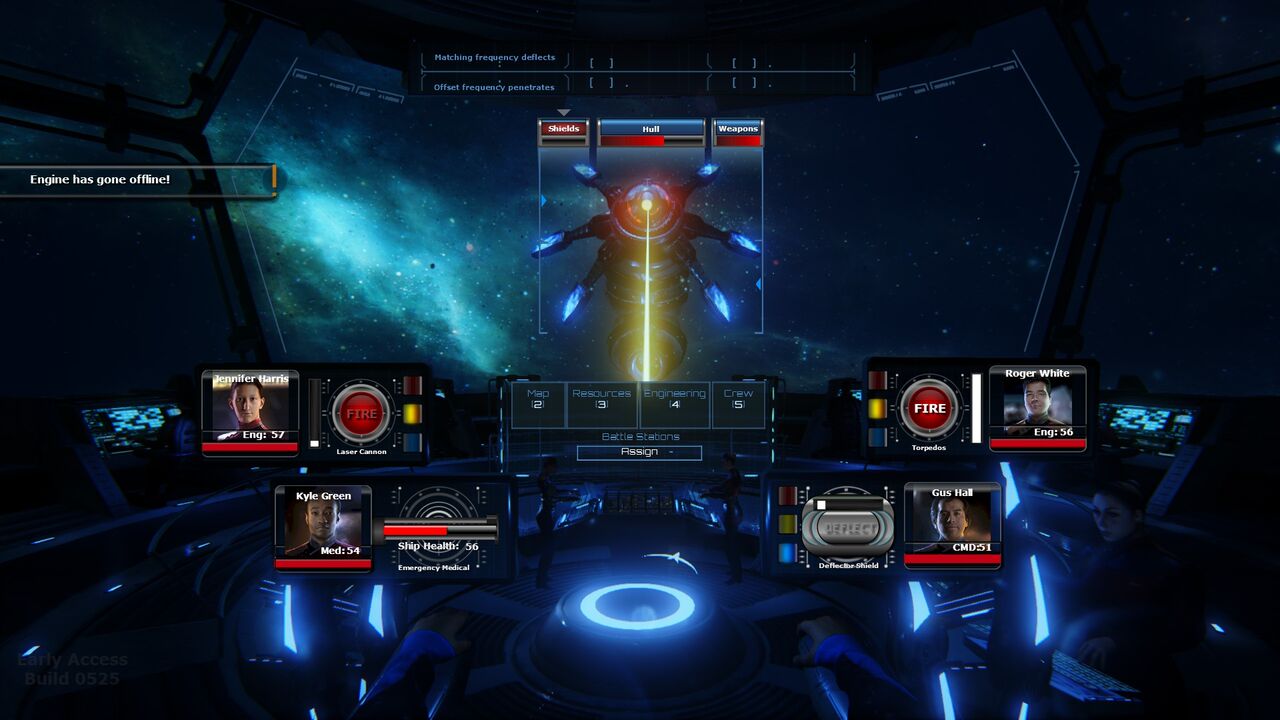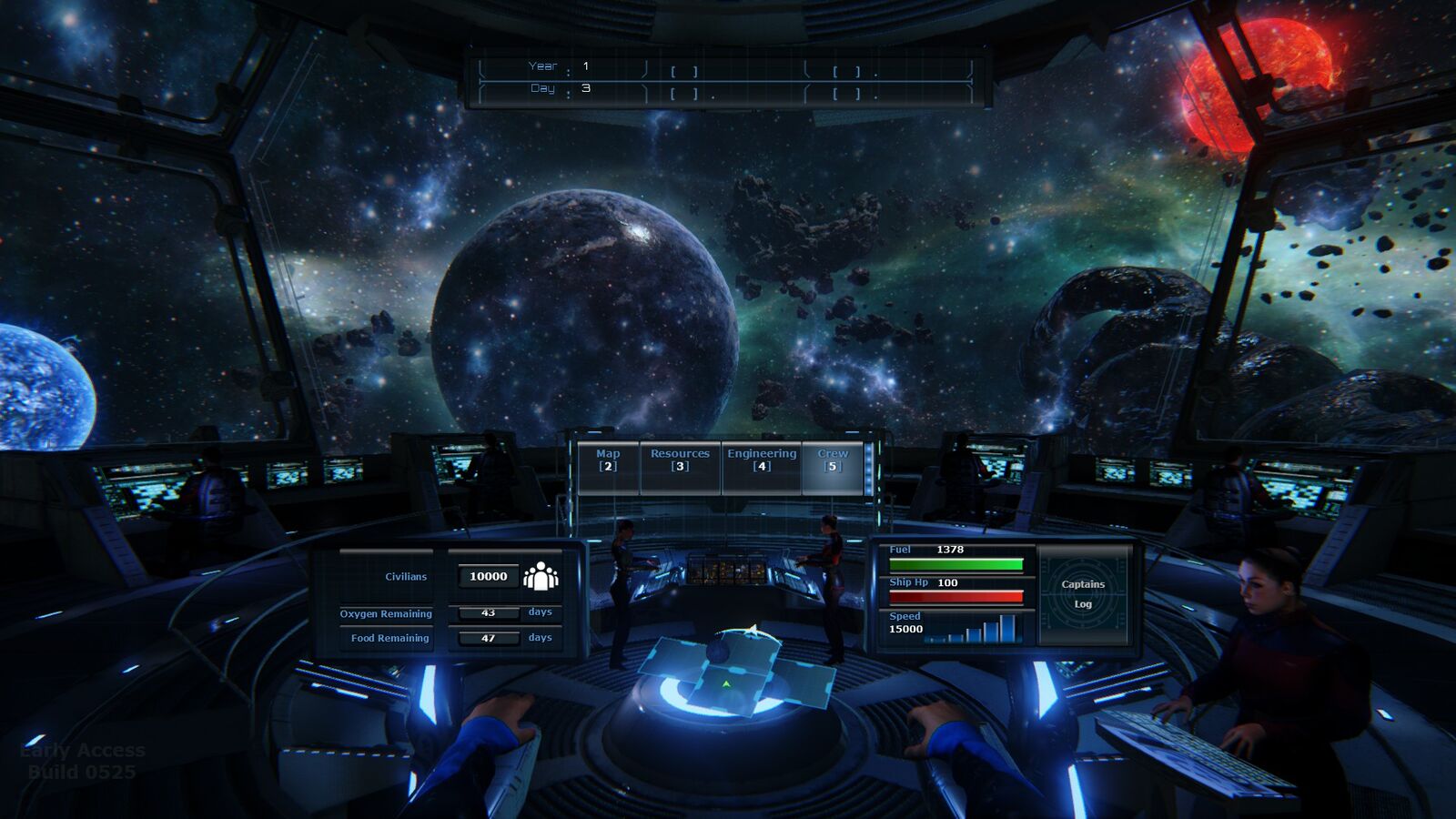Into the Stars is a flashier FTL

FTL: Faster Than Light captured the merciless expanse of space and the sadomasochistic appeal of roguelikes with a simple, 2D presentation. Into the Stars aims to do the same, but with flashier 3D graphics. If you're looking for some more punishment, I'm happy to report that it's shaping up nicely, even in its early state.
It starts with a dire situation. Your homeworld is destroyed by an evil alien race called the Skorn, most of humanity is already dead, and the 10,000 people that remain huddle on the last capital ship, which you must pilot to the other end of the galaxy, where a new habitable planet waits.
The Skorn, of course, are in pursuit, but unlike FTL's rebel fleet, they doesn't push you forward in an all-consuming wave that makes everything behind them irrelevant. Instead, you can spend a short amount of time in each of the 90 tiles that make up the galaxy before the Skorn pick up your scent and catch up, but you're safe as long as you keep moving from sector to sector.
You start each run by selecting a captain, six crew members, and modules for your ship. Picking a captain with a military background will make combat easier, while an entrepreneur will help manage your ship like a tight business. You can invest in different modules to similarly match your strategies, but each module will also require varying amounts of Into the Stars' five resources: hydrogen, carbon dioxide, magnesium, biomatter, and nitrogen. Obviously, different builds that require different resources will redefine your priorities for each attempt.
Each crew member comes with a portrait, backstory, and name (that you can change), which gives the ship some character, but you'll always want to end up with a balance of piloting, commanding, medicine, and other skills.
Controlling Into the Star's ship in real time in third-person or in first person from the captain's chair makes a big difference. It's a slow capital ship, so you won't be pulling off any exciting maneuvers, but it does help set the mood. Flying by glowing stars, floating asteroids, and chasing the lights of another ship in the distance makes it look like the epic space story the choices you make in it are telling.
Most of these choices take place when you send shuttle teams to the surface of alien planets in search of valuable resources and ship upgrades. You'll need to pick a pilot, commander, and medic from your existing crew, and then choose one of three events on the surface which are represented only by vague titles like "Feast."
Keep up to date with the most important stories and the best deals, as picked by the PC Gamer team.

The event then presents you with a binary choice, and a percentage to succeed. In the Feast event, for example, an alien race invited my crew member to partake in a celebratory meal. I said yes because what's the point of traveling if you don't taste the local delicacies, but the food didn't agree with poor captain Anderson's stomach.
I had to put her in the sick bay for a bit to heal up or risk losing her, which meant I'd be short staffed for combat encounters or any events that took place on the ship.
I've got 10,000 civilians in the back seat, and like bored children on a long road trip, they can get rowdy. Just like the ground missions, each problem on the ship can be resolved by assigning the right man or woman to the job. If there's a hull breach, you'll want a good engineer. If there's political turmoil, you'll want a good commander. At some point, all these problems start to stack, and there are no perfect choices, only acceptable losses.
Skorn attacks alone are not a huge challenge. You'll need to place crew at the lasers, shields, and torpedos combat stations, and choose the right attack for the right target based on a color-coded system. Attacks and shields can be set to yellow, red, or blue frequencies. If your enemy's shield is blue, you'll want to attack with yellow or red. If they're firing red lasers, you'll want your shields set to red.
It's super simple stuff, and on its own, not very interesting, but if the Skorn attacked when my crew was already preoccupied with other problems, it got pretty stressful. I jumped around nervously between matching frequencies and assigning crew to their stations as they came back from other duties. When an enemy projectile got through, I didn't only comprise the ship's hull, I also lost civilians by the dozens, which is a great way to raise the stakes.

Aside from the fancy-looking graphics, the galaxy map and how you choose to cross it is the biggest difference between FTL and Into the Stars. You could, theoretically, beeline through the galaxy to reach your goal, but that's not likely to work out. You'll want to zigzag a bit, explore planets, and find resources and upgrades to bolster your ship.
Having the freedom to point the bow of my ship at whatever planet in the distance looked interesting and pilot it there with WASD gave Into the Stars a stronger sense of discovery than just clicking one of two sectors in FTL.
The only progress that'll carry over between attempts is the knowledge you'll gain about the galaxy. The game is randomized, so you'll never know how an expedition to the surface of a planet will pan out or when an alien will pounce, but you'll learn that certain traders hang out in certain parts of space, which should make your next attempt easier.
Weirdly, while the stars and the ship itself look good, the the user interface is clunky, which is a big problem for a game that's played mostly through menus. Everything looks like software that's a decade old, more like a user-made interface for Winamp on Windows 95 than slick, futuristic design, or even a modern app on your phone. It's ugly, it's hard to find the information you need (where's my best pilot? What's the most pressing issue on my ship?), and basic actions are needlessly finicky.
For example, when choosing which resources to take with you at the start of a run, there's no easy way to select 400 units of biomatter. Instead, you have to hold down the "add" button that speeds up the longer you hold it, which inevitably makes you overshoot and correct.
These seem like issues that are pretty easy to fix by the time Into the Stars is released, and it's already on it's way to accomplishing something far more impressive: copying FTL's formula, but with a better sense of place. It's set to release as an Early Access game in July.

